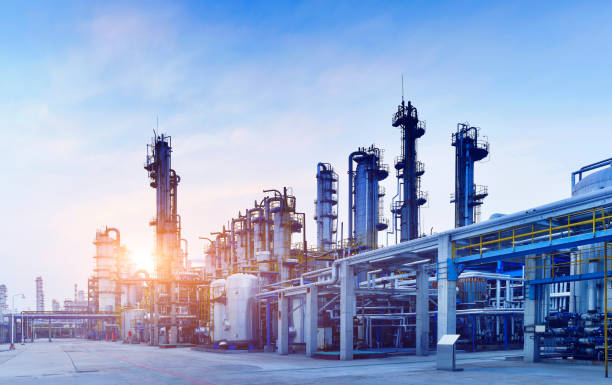- Español
- Português
- русский
- Français
- 日本語
- Deutsch
- tiếng Việt
- Italiano
- Nederlands
- ภาษาไทย
- Polski
- 한국어
- Svenska
- magyar
- Malay
- বাংলা ভাষার
- Dansk
- Suomi
- हिन्दी
- Pilipino
- Türkçe
- Gaeilge
- العربية
- Indonesia
- Norsk
- تمل
- český
- ελληνικά
- український
- Javanese
- فارسی
- தமிழ்
- తెలుగు
- नेपाली
- Burmese
- български
- ລາວ
- Latine
- Қазақша
- Euskal
- Azərbaycan
- Slovenský jazyk
- Македонски
- Lietuvos
- Eesti Keel
- Română
- Slovenski
- मराठी
- Srpski језик
what is HEDP
2021-11-11
HEDP (Etidronicacid) is an organic
compound with the molecular formula C2H8O7P2 and a molecular weight of 206.03. It is a white powdery solid, soluble in water as a colorless to
light yellow liquid. It is soluble in water, methanol, and ethanol. It has a
large dissociation constant in water and can form stable complexes with metal
ions. It forms stable adducts with compounds containing reactive oxygen species
to keep the reactive oxygen species stable—low toxicity.
It is mainly used as a scale inhibitor and corrosion inhibitor for boilers and heat
exchangers, complexing agents for cyanide-free plating, chelating agents for
soap, and cleaning agents for metal non-metal.
What are the physical and chemical
properties of HEDP?
Density 1.45(60% aq.)
Melting point 198~199°C
The appearance and shape remain stable
under high pH conditions, are not easily hydrolyzed, and are not affected by
enzymes in the body. Low toxicity and easy to be excreted, works well at 200°C,
decomposes above 250°C, acid, and alkali resistant. It can form stable
complexes with iron, copper, aluminum, zinc, and other metal ions.

Characteristics of HEDP
HEDP is an organophosphorus acid scale and
corrosion inhibitor, which can form stable complexes with iron, copper, zinc,
and other metal ions and dissolve oxides on metal surfaces; HEDP can still play
a good role in corrosion and scale inhibition at 250℃. It is still stable at a
high pH value and is not easy to be hydrolyzed. It is not easy to be decomposed
under general light and heat conditions. It has better acid-base resistance and
chlorine oxidation resistance than another organophosphorus acid (salt). HEDP
can form a six-ring chelate with metal ions in water, especially calcium ions,
so HEDP has good scale inhibition and an obvious solution-limiting effect. When
used in combination with other water treatment agents, it exhibits desirable
synergistic effects.
HEDP solids is a high purity product
suitable for use in harsh winter regions. It is particularly suitable for use
as a detergent and daily chemical additive in the electronics industry.
Applications of HEDP.
It is used as a scale inhibitor and
corrosion inhibitor for boiler and heat exchanger, complexing agent for
cyanide-free plating, soap chelating agent, and cleaning agent for metal and
non-metal.
Used as scale and corrosion inhibitor in
the boiler water, circulating water, oil field
water treatment. Often with polyhydroxy acids scale inhibitor dispersant
compound. It can also be used as a cyanide-free electroplating complex agent,
bleaching and dyeing industry color fixing agent, hydrogen peroxide stabilizer.
Application:This product is
the main material for cyanide-free plating. Prepared a cyanide-free copper
plating solution, copper plating layer directly on the steel with good
adhesion. Plating layer smooth, good color. The general dosage of 60% content
is 100-120ml/L, while the dosage of copper sulfate is 15-20g/L. Besides, before
planting, immerse the plating piece into 1%-2% solution of the product so that
the plating piece into the active state, and then plating can improve the
effect.
This product is a new type of non-chlorine
plating complex agent used to circulate the cooling water system as the main
agent for water quality stability, corrosion, and scale inhibition. The product
is an organic polyphosphoric acid aqueous tablet. The domestic production of
such products also includes some other species, such as amino trimethylene
phosphonic acid (ATMP): [CH2PO(OH)2]3N and
ethylenediaminetetetramethylenephosphonic acid (EDTMP) and so on. Organic
polyphosphoric acid is a water treatment agent developed in the late '60s and
confirmed around the '70s. The emergence of this treatment agent has greatly
improved water tablet treatment technology. Organic polyphosphoric acid has
good chemical stability; it is not easy to hydrolyze, can withstand higher temperatures
and low dose, and has scale inhibition characteristics. It is a cathodic type
corrosion inhibitor and non-chemical equivalent scale inhibitor. When used in
combination with other water treatment agents, it exhibits an ideal synergistic
effect. It has an excellent chelating function to many metal ions such as
calcium, magnesium, copper, zinc, etc. It even has a good deactivation effect
on these metals' inorganic salts such as CaSO4, CaCO3, MgSiO3, etc. Thus, it is
widely used in water treatment technology. The product is low toxicity, LD50
for rats subcutaneously 486.4mg/kg.
For scale inhibitor, the concentration is 1~10mg/L; for corrosion inhibitor, the
concentration is 10~50mg/L; for cleaning agent, the concentration is
1000~2000mg/L; usually used with polycarboxylic acid scale inhibitor and
dispersant.

In this paper, the measurement method of HEDP in the boiler water, the high-temperature dissociation characteristics of HEDP, and the scale and corrosion inhibition properties of HEDP are studied under the simulated water quality of industrial boilers. The following conclusions are drawn: HEDP is used as a scale and corrosion inhibitor in the boiler water. The first problem to be solved is the determination of HEDP. However, HG/T3537-1999 standard method for HEDP analysis and detection is cumbersome (the determination time generally takes 2-3 hours). Simultaneously, thorium nitrate complex titration is used to detect HEDP, although the determination steps are simple. However, thorium nitrate is a radioactive substance that will bring a great burden to the environment and harmful to the human body. By studying the determination of HEDP using an improved spectrophotometric method, the determination time is greatly reduced (the determination can be completed in 20-30 minutes). The influence of various ions on the measurement of industrial boiler water was discussed. The optimal measurement conditions (wavelength 470 nm, pH less than 2, reaction time 5 minutes, color development time 15 minutes) were determined. The optimum conditions (wavelength 470 nm, pH less than 2, reaction time 5 minutes, color development time 15 minutes) were determined. When the sodium chloride content in boiler water was less than 500 mg/L, Ca2+ concentration was less than 300 mg/L, phosphate content was less than 20 mg/L, and the amount of SO42- was less than 50 mg/L, it did not interfere with the detection of HEDP. The relative standard deviation of the method was less than 1% in the precision test. The stability of HEDP in boiler water directly affects its scale and corrosion inhibition performance. Therefore, the thermal decomposition characteristics of HEDP in simulated industrial boiler water under aerobic, anaerobic, and different pH conditions were studied.

Under aerobic conditions, the decomposition rate of HEDP accelerated with the increase of temperature, and the decomposition intensified at 140℃. When the temperature reaches 160℃, the decomposition of HEDP is almost complete, and the decomposition products are mainly phosphate compounds. In the anaerobic condition, the decomposition of HEDP intensified with increasing temperature. The decomposition of HEDP occurred to a greater extent above 200℃. However, compared with the decomposition of HEDP under aerobic conditions, it can tolerate a higher temperature, which shows that it is vital to control the furnace water's oxygen content to make HEDP develop its efficacy optimally. The effect of pH change on the thermal decomposition of HEDP was investigated at 150℃, and it was shown that pH change had little effect on the thermal decomposition of HEDP. HEDP could exist stably under high alkaline conditions. The scale inhibition performance of HEDP was tested by both conductive and static scale inhibition experiments. The results showed that the scale inhibition performance of HEDP was evaluated consistently by both conductive and static scale inhibition methods. As the concentration of HEDP increases, the scale inhibition rate gradually increases.

However, the
scale inhibition efficiency of HEDP has a certain threshold value, after which
the scale inhibition rate does not change much. Adding 5-7mg/L HEDP to the
solution can achieve a larger scale inhibition rate; also, its scale inhibition
performance is related to the solution's concentration ratio and pH value. The
temperature has a great influence on the scale inhibition performance of HEDP.
As the temperature increases, the scale inhibition performance of HEDP
decreases. Under the condition of low calcium ion concentration and HCO3-concentration,
HEDP has a better inhibiting effect on the calcium carbonate scale. In
contrast, high calcium ion concentration and HCO3-concentration will inhibit
the scale inhibition performance of HEDP. Electrochemical impedance
spectroscopy (EIS), Tafel polarization curve, and autoclave flake test were
used to study the corrosion inhibition performance of HEDP on 20# carbon steel
at room temperature. The experiments showed that a certain concentration of
HEDP (25mg/L) could effectively inhibit the corrosion of carbon steel, and the
results of electrochemical experiments and high-temperature sagging test were
consistent; the HEDP autoclave sagging test showed that the oxidation rate of
20# carbon steel in simulated boiler water was lower than the dissolution rate
in the operating temperature range of industrial boilers, and the sagging
showed weight loss. However, the addition of HEDP could not reduce Cl- in the
boiler water; it could not reduce the concentration of Cl- in the boiler water.
The addition of HEDP can effectively inhibit chlorine ions' direct corrosion to
the metal, thus allowing a relatively high concentration of chlorine ions in
the boiler water. By analyzing the HEDP concentration, corrosive anion,
temperature, and other factors in the simulated boiler water, we can
comprehensively evaluate the scale and corrosion inhibition performance of HEDP
on 20-gauge carbon steel obtain suitable conditions and parameters that can
serve as a reference for actual production.
If you want to know more about HEDP parameters or purchase HEDP in bulk, please contact us! https://www.vcycletech.com/contact.html






